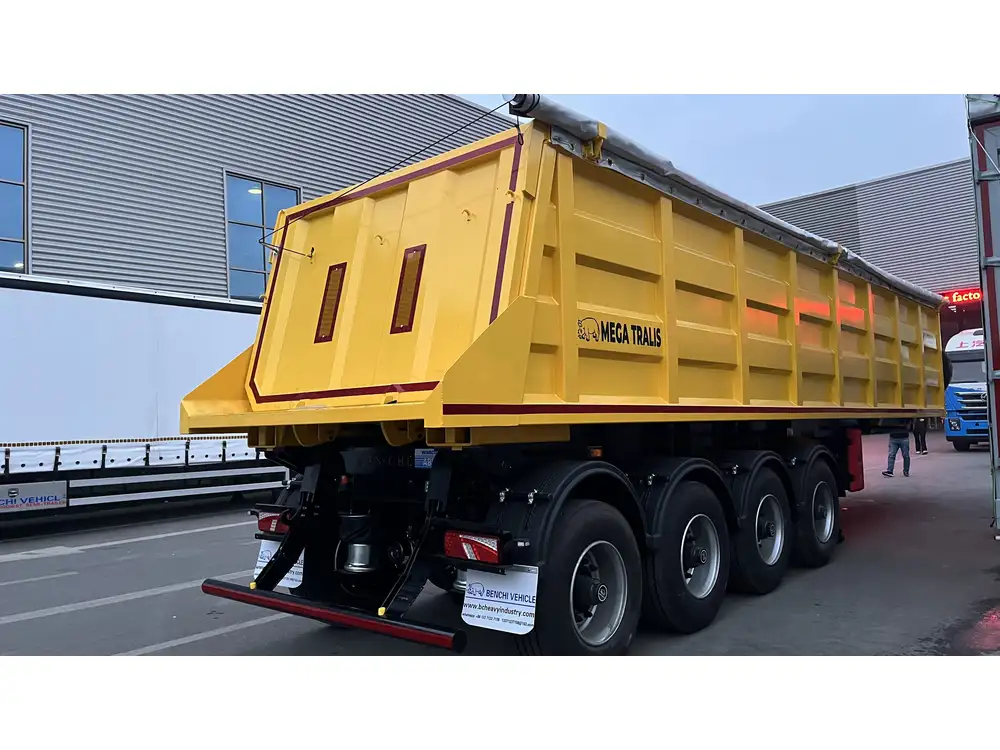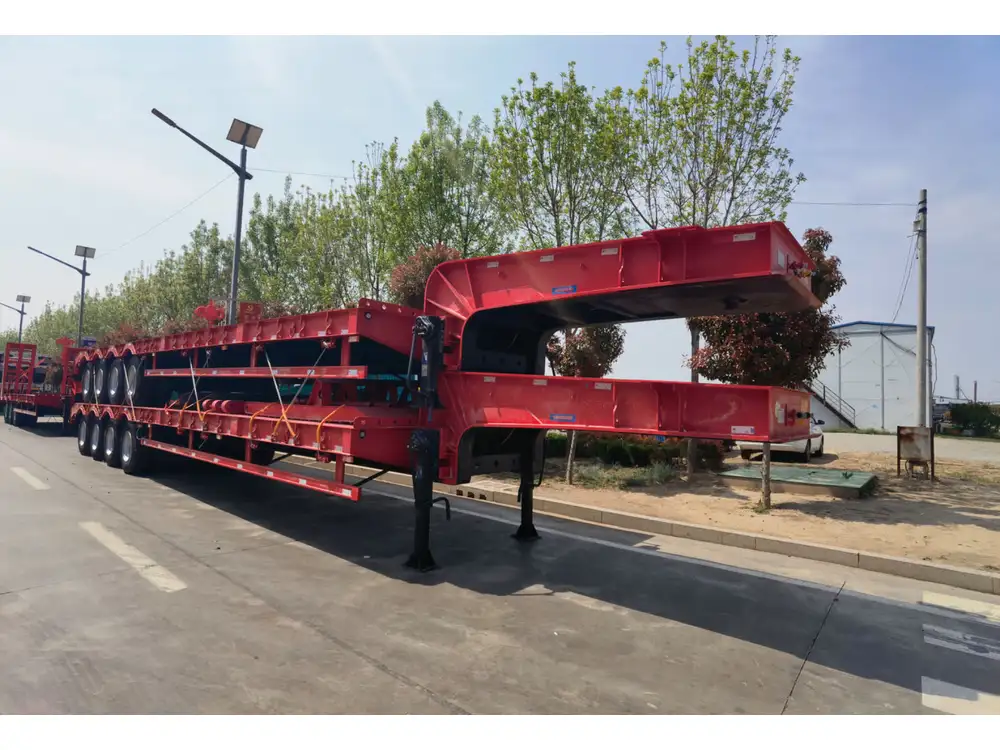Semi trailers are a critical component of freight transportation, particularly in the agricultural sector. Their ability to carry bulk materials like wheat efficiently makes them indispensable for farmers and distributors alike. In this article, we will explore the intricacies of semi trailer capacities, specifically focusing on how many bushels of wheat a semi trailer can hold. By providing a thorough analysis, we aim to clarify common queries and assist operators in optimizing their logistics.
The Basics of Semi Trailer Capacities
Understanding Bushels
Before diving into the specifics of semi trailer capacities, it’s imperative to understand what a bushel is. A bushel is a unit of measurement primarily used in the agricultural sector to quantify volumes of dry goods. It is defined as approximately 1.244 cubic feet.

What is a Standard Semi Trailer?
A standard semi trailer, commonly used in agricultural transport, measures about 48 to 53 feet in length, 8.5 feet in width, and has a height of approximately 13.5 feet. The design of the trailer influences how much cargo it can carry. The two primary types of semi trailers relevant to our discussion are:
- Flatbed Trailers: These are open-air trailers without sides or a roof, suitable for transporting large and bulky items.
- Dry Van Trailers: These enclosed trailers are more suitable for sensitive goods, including grain, as they offer protection from environmental factors.
Calculating the Carrying Capacity of Semi Trailers
Typical Capacity of a Semi Trailer
For dry van trailers, a common calculation for wheat transport must consider not just the physical dimensions but also the unique properties of the wheat itself, particularly its weight.
- Weight of Wheat: One bushel of wheat weighs roughly 60 pounds.
- Volume of Wheat: As noted earlier, a bushel occupies about 1.244 cubic feet.
Carrying Capacity Calculation:
To determine how many bushels a semi trailer can carry, we first establish the total volume available in the trailer’s cargo space and then convert that volume into bushels.

Example Calculations for Different Sized Trailers
| Trailer Size | Internal Volume (cubic feet) | Bushels of Wheat |
|---|---|---|
| 48 ft (Dry Van) | Approx. 3,029 | ~2,432 bushels |
| 53 ft (Dry Van) | Approx. 3,500 | ~2,814 bushels |
Note: The calculations assume optimal weight distribution and that the trailer is filled to its maximum capacity.
Considerations for Loading and Transporting Wheat
While calculating the bushels a trailer can hold provides a good starting point, several factors can affect actual transport capacity:
Weight Limitations: Most states in the U.S. have legal weight restrictions for trucks that usually fall between 80,000 lbs for a semi truck, including the trailer’s weight. Transporting the maximum number of bushels while remaining within this limit is crucial to avoid legal issues.
Legal Load Calculation: For instance, if the weight limit is 80,000 lbs, and each bushel of wheat is 60 lbs, then: [ \text{Max Bushels} = \frac{80,000 \text{ lbs}}{60 \text{ lbs/bushel}} \approx 1,333 \text{ bushels} ]
This example illustrates that a 53-foot trailer may carry only 1,333 bushels without exceeding the weight limit, despite having a volumetric capacity for more.
Loading Efficiency: The method of loading can affect how much product can realistically fit in a trailer. Bulk loading with the right equipment ensures maximum utilization of space.
Transportation Regulations: Varying regulations in different states or countries must be adhered to, impacting how much can be transported.
Practical Examples and Case Studies

Case Study: Farmer X’s Wheat Transport
For practical understanding, consider Farmer X, who wishes to transport his harvest using a standard 53-foot dry van trailer.
Estimated Yield: Farmer X harvests 166 acres, with an average yield of 85 bushels per acre.
[ \text{Total Yield} = 166 \text{ acres} \times 85 \text{ bushels/acre} = 14,110 \text{ bushels} ]Transport Requirements: With a trailer capacity of 2,814 bushels, Farmer X will need to make:
[ \text{Number of Loads} = \frac{14,110 \text{ bushels}}{2,814 \text{ bushels/load}} \approx 5 \text{ loads} ]
Optimization Strategies
In this scenario, efficient scheduling and route planning become essential. Farmer X could streamline his operations by:
- Using Multiple Trailers: Employing multiple trailers can facilitate faster transport, minimizing delay.
- Understanding Market Demand: Timing the transport to coincide with pricing peaks can result in better profits.
- Regular Maintenance: Ensuring trailers are regularly maintained to prevent breakdowns during transportation.
Comparing Different Semi Trailer Options for Wheat Transportation
Not all semi trailers are equal in performance. Comparing variations can help in selecting the best option:
| Trailer Type | Advantages | Disadvantages |
|---|---|---|
| Dry Van | Offers protection from elements; Ideal for bulk | Higher initial cost; Less flexibility for loading |
| Flatbed | Versatile for various cargo; Easier loading | Susceptible to weather; Requires tarping |
| Tanker | Good for liquid grain transport (if needed) | Not suitable for dry goods; Specialized use |

Environmental Considerations and Sustainability in Transportation
When discussing the transport of agricultural products like wheat, it’s imperative to consider environmental responsibilities. The freight industry has been a significant contributor to carbon emissions, and a transition toward more sustainable practices is crucial.
- Fuel Efficiency: Choosing trailers and trucks that prioritize fuel economy can yield both cost savings and environmental benefits.
- Alternative Fuels: Investing in trucks that utilize biodiesel or electric engines can significantly reduce carbon footprints.
- Route Planning Software: Advanced logistic software can optimize routes, reducing fuel consumption and minimizing emissions over time.
Final Thoughts
Understanding how many bushels of wheat a semi trailer can hold involves more than just straightforward calculations. From recognizing measurement units to considering legal weight limits and regulations, the nuances of transport logistics are manifold.
In essence, while a 53-foot dry van may theoretically hold around 2,814 bushels of wheat based on volumetric calculations, actual load capacity is often restrained by weight regulations, leading to more complex planning for logistics operators.
Farmers, transporters, and manufacturers alike each play a pivotal role in the agricultural sector—optimizing each link in the supply chain contributes not only to operational profitability but also to the industry’s broader sustainability goals.
By adhering to best practices, leveraging advanced technologies, and fostering adaptive strategies, stakeholders can navigate the challenges of transporting agricultural commodities efficiently and responsibly.



